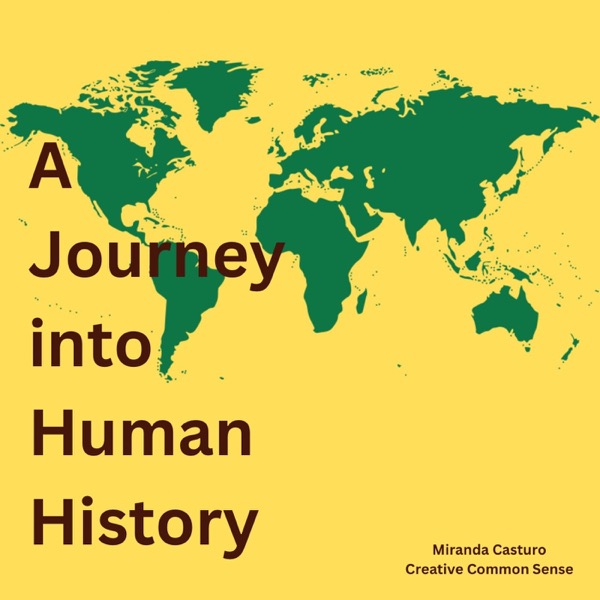Populating and Settling the Americas
A Journey into Human History - Un pódcast de Miranda Casturo

Categorías:
During the last glacial period, modern humans crossed Beringia and entered the Americas for the first time, migrating across North, Central, and South America. They relied on hunting large game and may have contributed to the extinction of some animals. Later they became more settled in a number of regions, adapting their hunter-gatherer strategies to their environments and the available resources.About nine thousand years ago, groups like those in the Andes region began experimenting with animal domestication. Later they began to cultivate edible plants like squash, bottle gourds, and later the potato. In Mesoamerica, the shift to maize-based agriculture began at some point between 5000 and 3000 BCE. By around 2500 BCE, the use of domesticated maize had become more common and enabled the settlement of agricultural villages that combined the strategies of hunting and gathering with maize cultivation. Over time, the advantages of maize agriculture became more obvious, and exclusively sedentary agricultural communities emerged. In the Eastern Woodlands, a different agricultural tradition emerged independently by 2000 BCE. In each area, plant domestication allowed Neolithic settlements to begin, from which larger cultures and civilizations later grew. All images referenced in this podcast can be found at https://openstax.org/books/world-history-volume-1/pages/8-1-populating-and-settling-the-americas Welcome to A Journey into Human History. This podcast will attempt to tell the whole human story. The content contained in this podcast was produced by OpenStax and is licensed under a Creative Commons Attribution License. Access for free at https://openstax.org/books/world-history-volume-1/pages/1-introduction Podcast produced by Miranda Casturo as a Creative Common Sense production.
